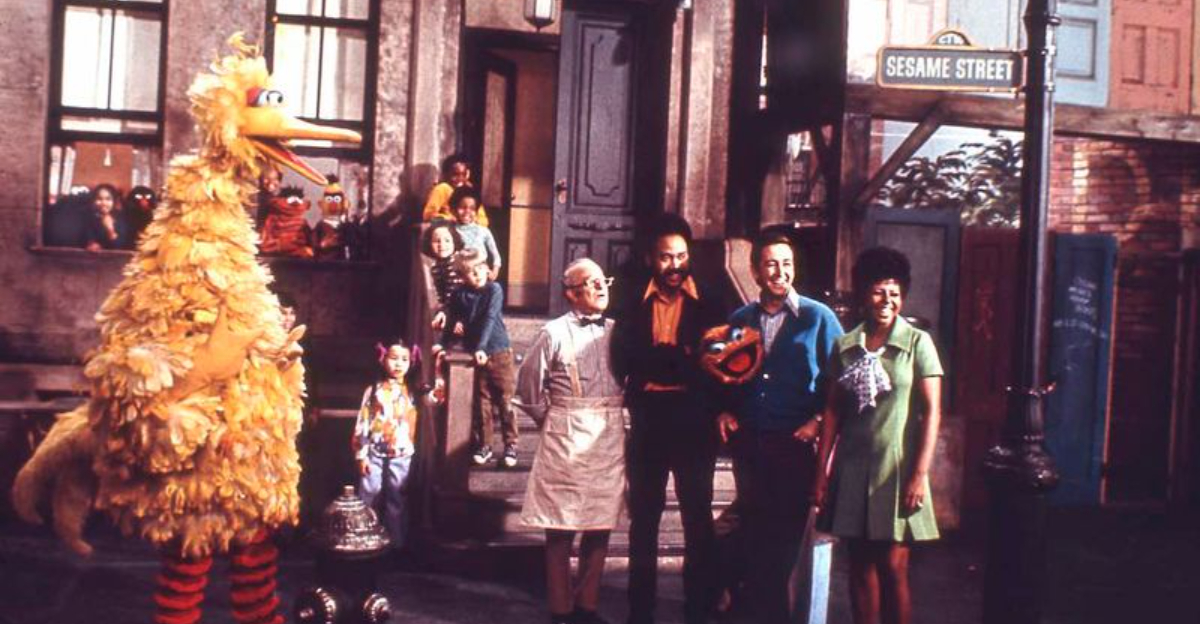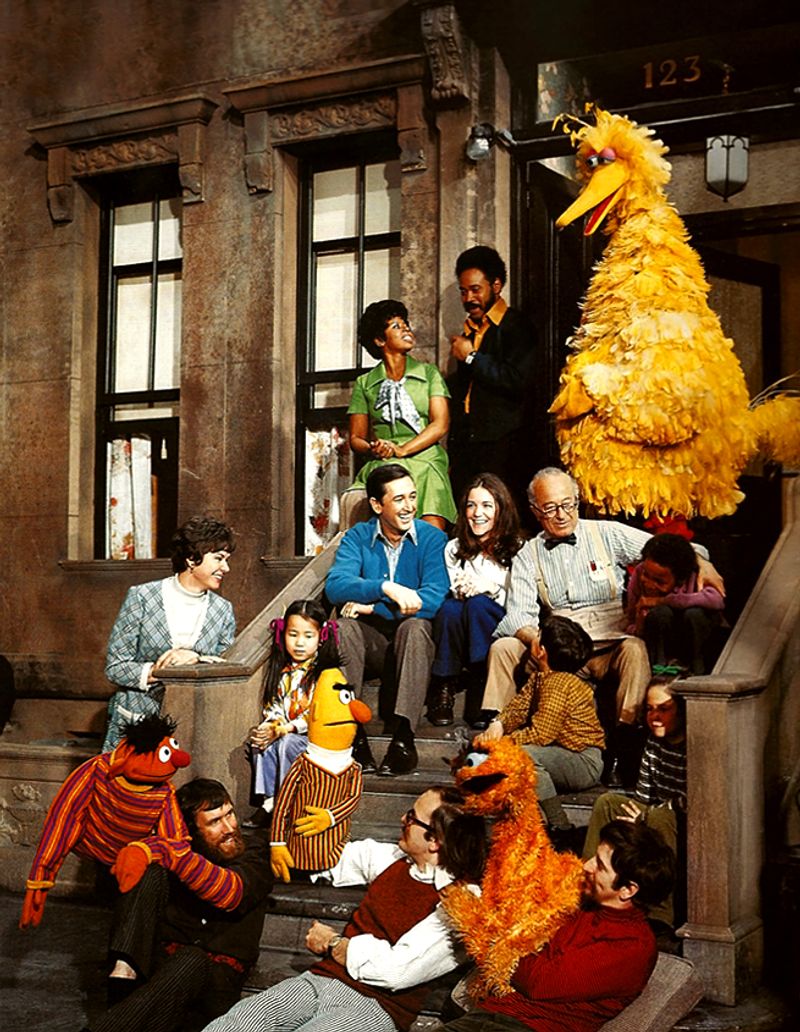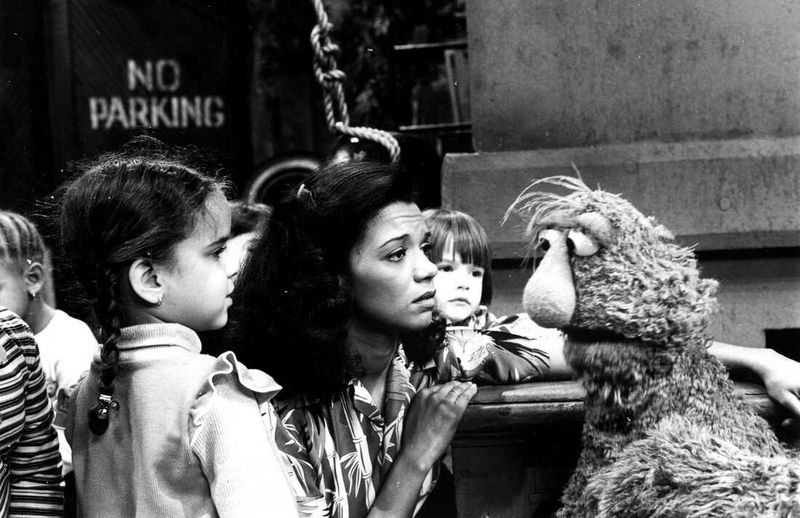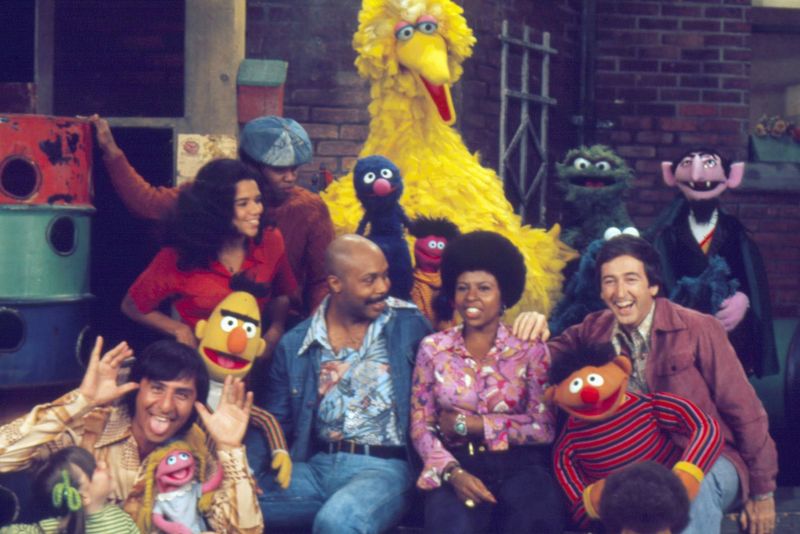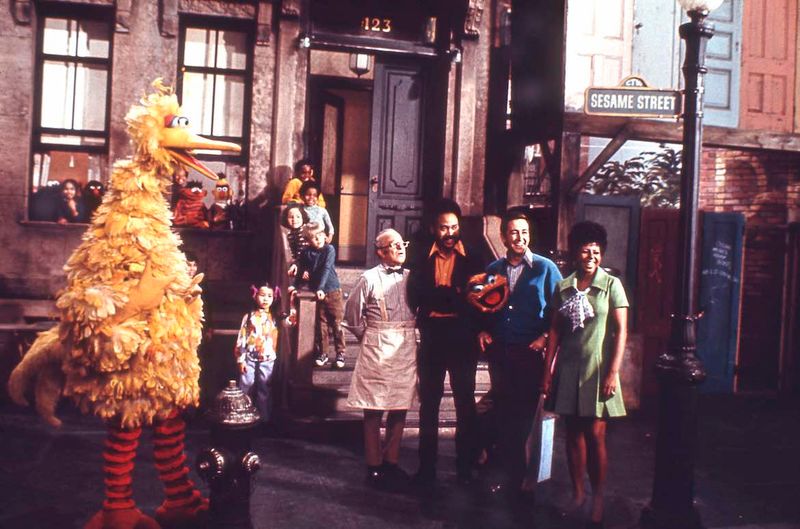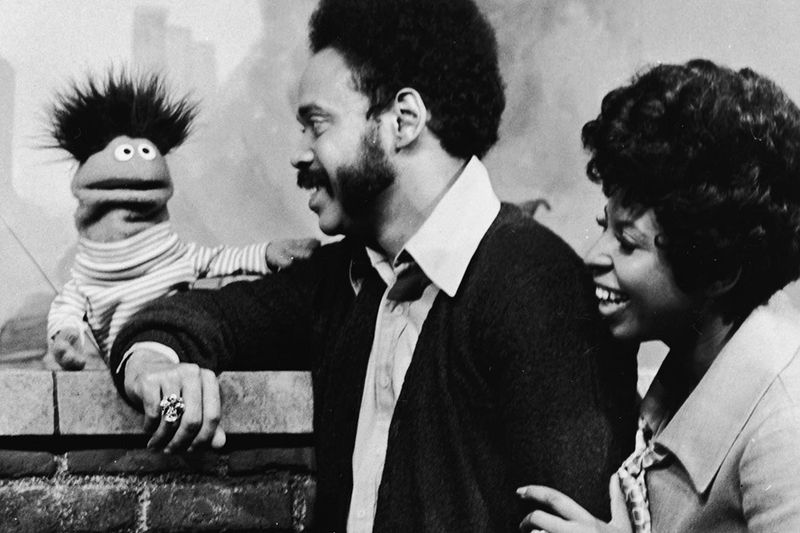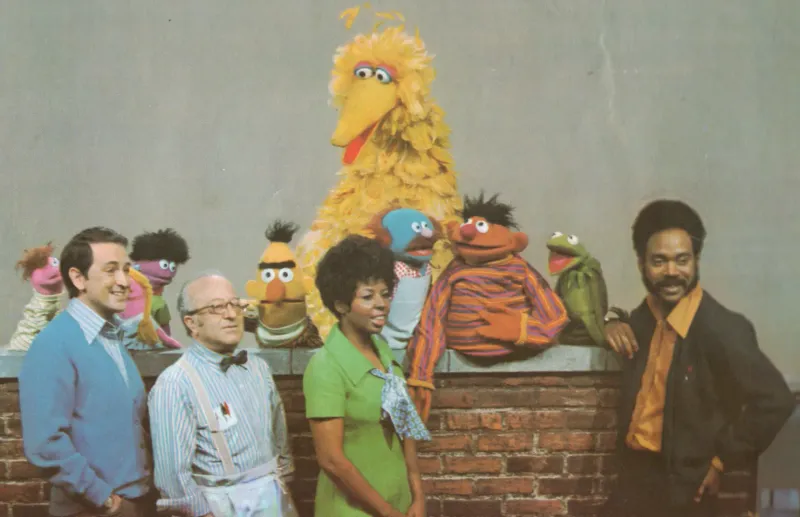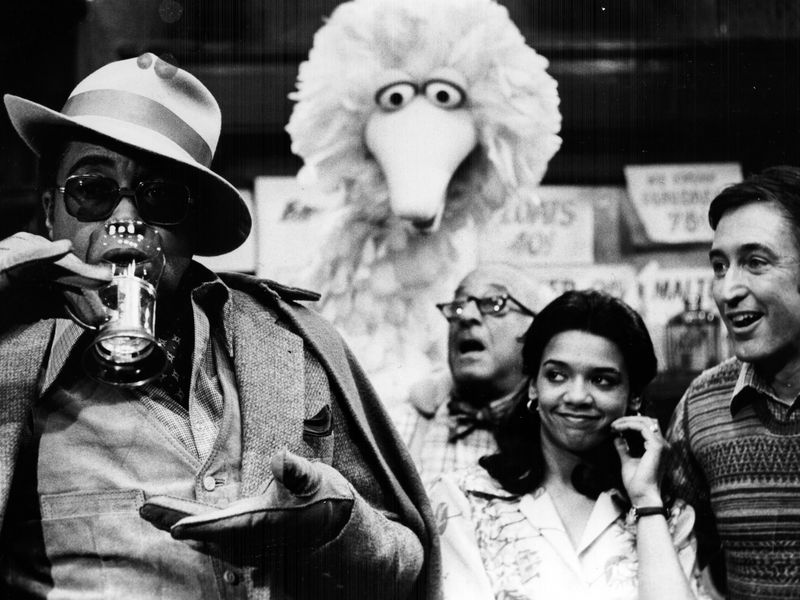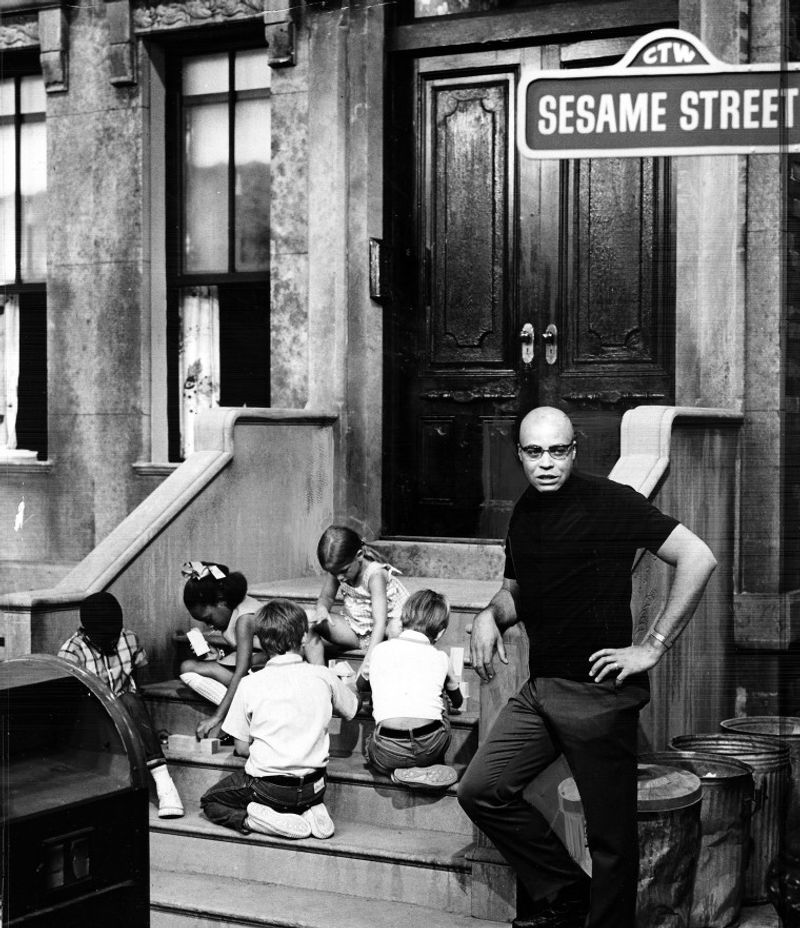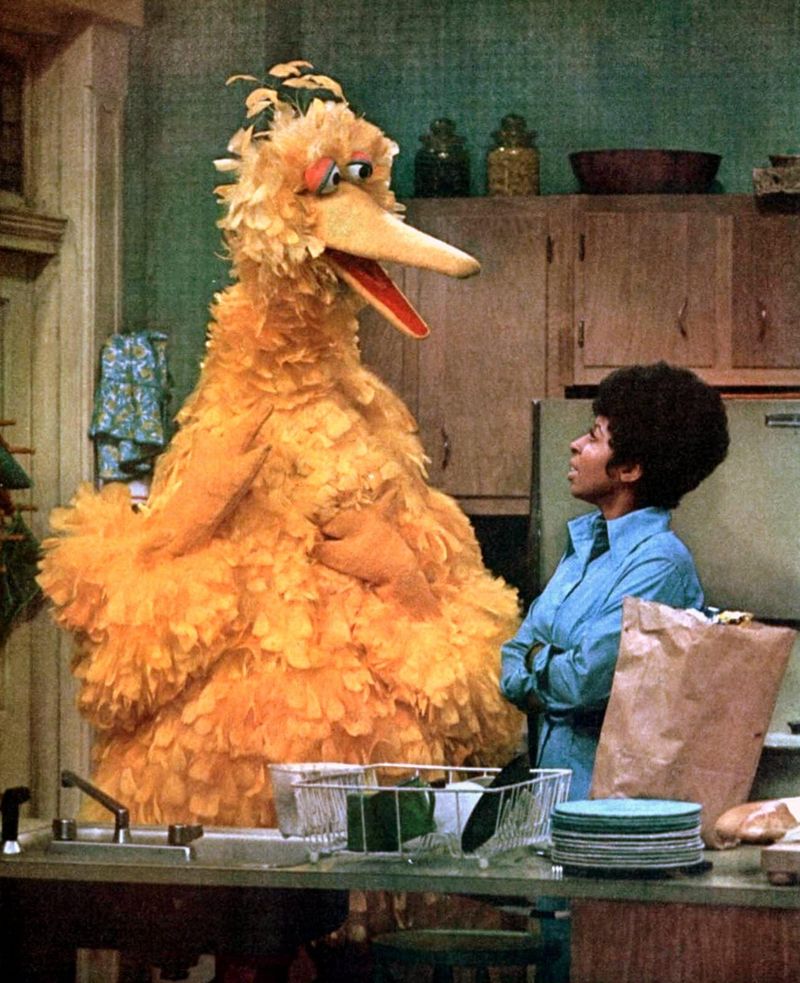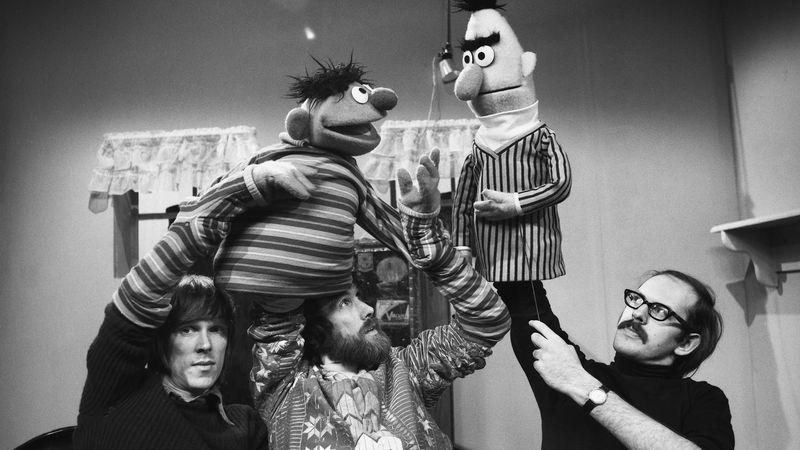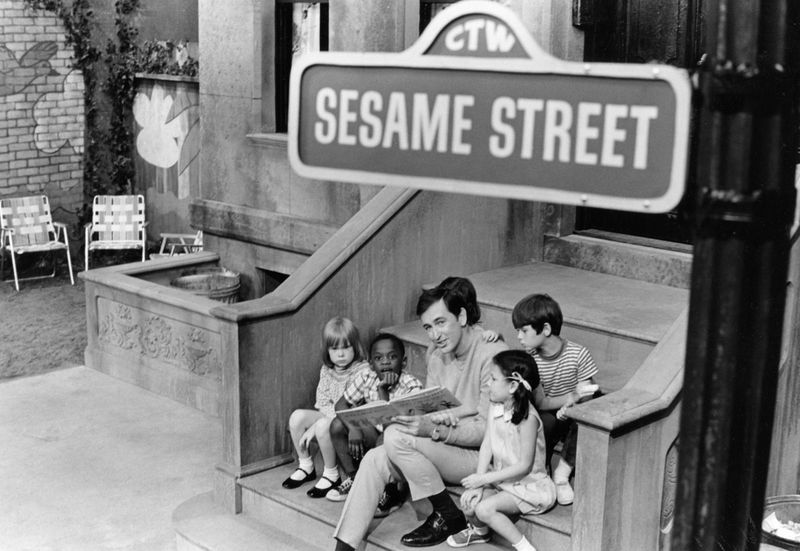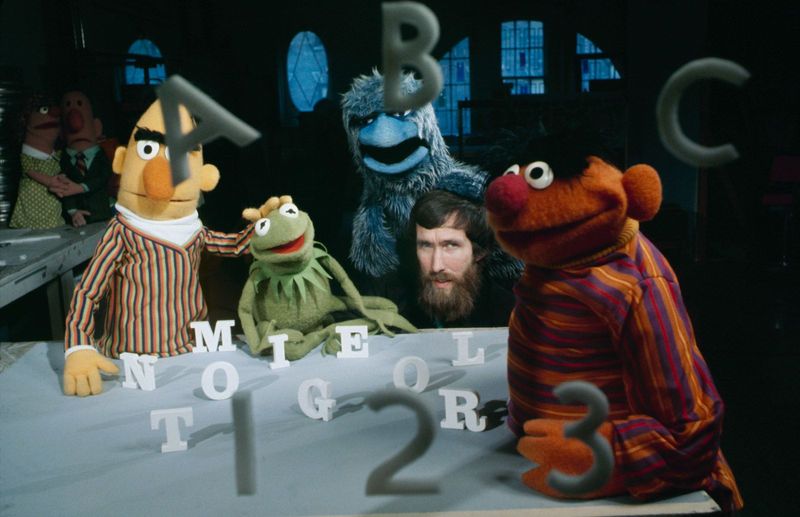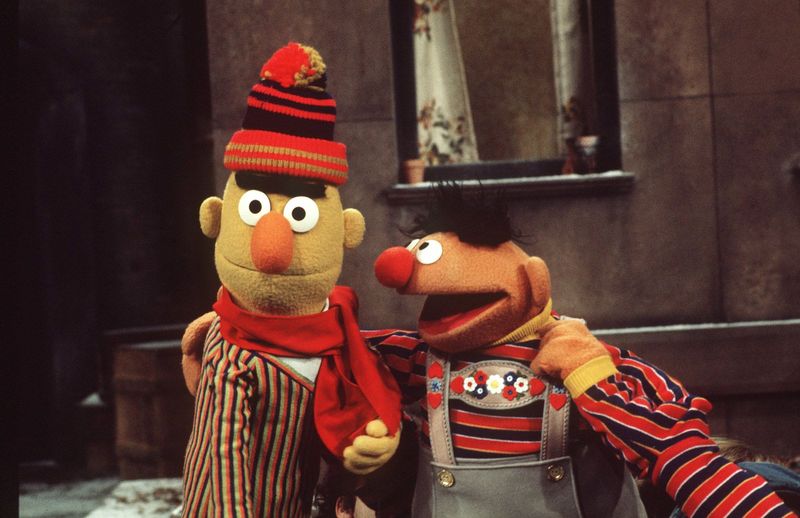When Sesame Street hit the airwaves in 1969, few could have predicted the seismic impact it would have on children’s programming—and television as a whole. But it was the 1970s that cemented its legacy. With bold choices, diverse voices, and a mission far bigger than puppets, Sesame Street rewrote the rules of TV. Here’s how the 1970s version of this beloved show transformed screens—and minds—around the world.
1. It Put Inner-City Kids Front and Center
While most kids’ shows focused on fantasy, Sesame Street placed its action on an urban stoop surrounded by brownstones, street vendors, and fire escapes. It was a deliberate choice to reflect the reality of underserved children living in American cities. Children saw a world that resembled their own, making the show relatable. This setting broke away from the traditional, sanitized environments typical of children’s TV at the time. It offered a sense of inclusivity and realism, inviting kids into a world where they felt seen and heard. By doing so, it became a pioneer for diverse representation.
2. It Treated Preschoolers Like Smart People
Sesame Street didn’t underestimate its audience. Instead, it approached children as intelligent beings capable of understanding complex ideas. The show’s creators used sophisticated humor, real educational theory, and fast-paced edits to engage young minds, mirroring the style of commercials that kids were accustomed to. By doing so, it held their attention without resorting to oversimplification. This respect for the audience’s intelligence was revolutionary. It fostered a generation of inquisitive, informed individuals, trusting that even the youngest viewers could grasp and appreciate nuanced content. This approach set a new standard for educational programming.
3. It Featured a Racially Diverse Cast—On Purpose
In the midst of civil rights upheaval, Sesame Street introduced Black and Latino characters not as sidekicks, but as integral parts of the neighborhood. Gordon, Susan, Maria, and Luis weren’t just on-screen—they were heroes. This representation was groundbreaking, offering children of color role models who looked like them. By normalizing diversity, the show encouraged acceptance and understanding, paving the way for more inclusive programming. It resonated with audiences and demonstrated the power of media in shaping societal perceptions. Sesame Street’s commitment to diversity was a bold statement, emphasizing equality and representation.
4. It Mixed Puppets with People in Everyday Settings
No magical land here—Big Bird and Oscar lived right alongside human characters. It was a radical blend of fantasy and reality that helped kids relate emotionally to both. By integrating puppets with people, Sesame Street created a unique dynamic. This combination allowed for storytelling that was both imaginative and grounded. Children could see themselves in the characters, whether cloth or human, fostering a sense of empathy and connection. The show’s innovative use of puppetry challenged traditional formats, setting a precedent for future programming. This harmonious blend of worlds captivated audiences and enriched children’s imaginations.
5. It Taught Real-Life Skills, Not Just ABCs
Alongside letters and numbers, Sesame Street taught kids how to brush their teeth, cross the street safely, and treat others with kindness. It was education for life, not just for school. By addressing practical skills, the show equipped children with the tools they needed for everyday life. This approach went beyond academics, fostering well-rounded development. Kids learned the importance of safety, hygiene, and social interaction. The show’s commitment to real-life education set it apart, making learning relevant and applicable. This holistic approach to education helped shape responsible, aware young citizens, ready to navigate the world.
6. It Tackled Taboo Topics Head-On
Sesame Street didn’t shy away from heavy stuff. From death to adoption, it trusted kids could handle—and needed—honest conversations. Mr. Hooper’s passing in 1983 was set up in the ’70s era, showing that loss is a part of life. The show addressed these topics with sensitivity, providing a safe space for children to explore emotions and learn about the world. By discussing previously taboo subjects, it opened a dialogue between kids and caregivers. This bold approach empowered children, giving them the tools to understand and cope with complex issues, fostering resilience and emotional intelligence.
7. It Made Learning Fun With Catchy Songs
The show turned lessons into music long before Schoolhouse Rock. Songs like “Ladybug’s Picnic” and “I Love Trash” weren’t just catchy—they cemented concepts in kids’ brains. Music made learning memorable and enjoyable. The show’s innovative use of songs transformed mundane lessons into exciting, interactive experiences. Children eagerly sang along, reinforcing educational content through repetition and rhythm. These musical segments became iconic, illustrating the power of music as a teaching tool. By blending entertainment with education, Sesame Street created a lively, engaging atmosphere that captured children’s attention and imagination, making learning a joyful experience.
8. It Hired Jim Henson’s Muppets, Not Cartoon Characters
Instead of slick, animated mascots, Sesame Street embraced the shaggy charm of Muppets. Kermit, Grover, Cookie Monster, and the rest were wild, weird—and unforgettable. Their unique personalities and appearances made them endearing to audiences. The Muppets brought a sense of whimsy and authenticity, contrasting with the polished animation of the era. Jim Henson’s creations added depth and character to the show, enhancing its educational mission. These distinctive puppets became cultural icons, beloved by generations. By choosing Muppets over cartoons, Sesame Street set itself apart, offering a fresh, innovative approach to children’s programming.
9. It Collaborated With Top Educators and Psychologists
Every episode of Sesame Street was based on research and tested with children. The goal? Maximize learning while keeping engagement sky-high. It was TV with a brain and a heart. This collaboration ensured that the content was not only entertaining but also educationally sound. By working with experts, the show maintained a high standard of quality, aligning with developmental needs and learning theories. This research-driven approach was groundbreaking, setting a benchmark for future educational programming. By integrating expert insights, Sesame Street became a trusted source of knowledge and inspiration, revolutionizing how educational content was created and delivered.
10. It Brought Celebrities Into the Sandbox
Long before guest stars became the norm, Sesame Street featured the likes of James Earl Jones, Carol Burnett, and Stevie Wonder. Kids saw famous faces teaching them lessons—not selling toys. These appearances added a layer of excitement and interest, attracting viewers of all ages. Celebrities brought their unique talents, contributing to the show’s engaging content. Their involvement underscored the importance of education, showing that everyone, regardless of fame, can play a role in learning. By inviting stars into its world, Sesame Street bridged the gap between entertainment and education, offering a fresh, star-studded approach to teaching.
11. It Created a Universe Without Commercials
Sesame Street was broadcast on PBS, free of advertisements. This made the show more trustworthy for parents—producers focused solely on the child’s experience. Without commercial interruptions, the content remained pure and educational. Parents appreciated this ad-free environment, knowing their children were not subjected to marketing tactics. This approach also allowed for uninterrupted storytelling, maintaining the show’s educational integrity. By prioritizing the child’s experience over profit, Sesame Street cultivated a sense of trust and reliability. It set a precedent for quality children’s programming, proving that education and entertainment could thrive without commercial influence.
12. It Embraced Bilingual Education
With characters like Maria and Luis speaking Spanish and singing bilingual songs, the show helped normalize multiculturalism and bilingualism. Decades before it was trendy, Sesame Street introduced children to different languages and cultures. This exposure fostered a sense of curiosity and appreciation for diversity. By integrating bilingual content, the show expanded its educational scope, reaching a wider audience. It encouraged inclusivity and understanding, preparing kids for a globalized world. Sesame Street’s commitment to bilingual education was ahead of its time, highlighting the value of linguistic diversity and cultural exchange in shaping open-minded, empathetic individuals.
13. It Broke the “Perfect Parent” Mold
Adults on Sesame Street weren’t flawless—they made mistakes and learned along with the kids. It showed a more authentic, human side of grown-ups that kids rarely saw on TV. By portraying imperfect adults, the show provided relatable role models, teaching children that it’s okay to err and grow. This realistic depiction of parenting fostered understanding and empathy, breaking away from the traditional portrayal of adults as infallible. It encouraged healthy communication and problem-solving, demonstrating that learning is a lifelong process. Through this approach, Sesame Street offered a nuanced perspective on adulthood, enriching children’s understanding of human relationships.
14. It Gave Kids Control Over Their Learning
Segments like “Choose Your Own Adventure”-style questions and call-and-response games invited kids to participate actively. They could yell, sing, and laugh, not just watch. This interactivity empowered children, making them active participants in their learning journey. By giving kids a voice, Sesame Street encouraged engagement and exploration. It fostered a sense of agency, enabling children to influence their educational experiences. This innovative approach set a precedent for interactive learning, emphasizing the importance of active involvement in education. By prioritizing child-centric methods, Sesame Street transformed passive viewing into a dynamic, enriching experience.
15. It Made Being Kind the Coolest Lesson of All
Amid all the ABCs and 123s, the show’s deepest message was empathy. Whether it was Grover trying to help (and failing), or Big Bird feeling lonely, the emotional intelligence of the show set it apart. It taught that kindness and understanding were paramount. This focus on emotional learning distinguished Sesame Street from other shows, emphasizing the importance of compassion. Through relatable scenarios, it encouraged children to practice kindness in their own lives. This powerful message resonated with audiences, reinforcing the idea that empathy is foundational to personal and communal growth, making kindness a core value in education.
